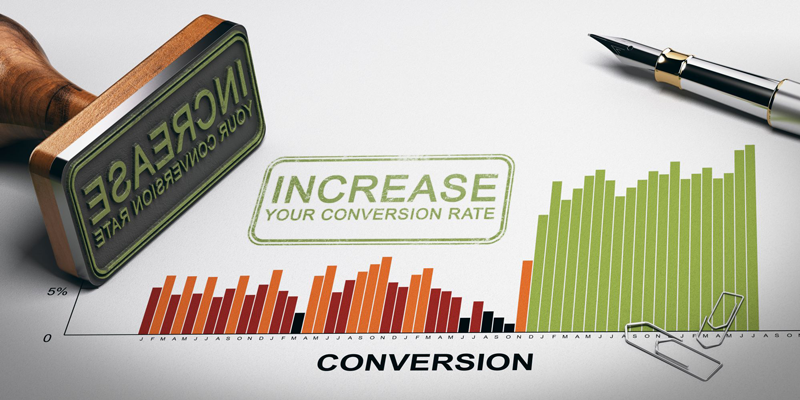
A high-converting website design encourages visitors to take a desired action, such as signing up for a newsletter, purchasing, or calling a phone number. This type of design is essential because it can help businesses to increase their leads, sales, and revenue.
You must invest in a high-converting website design to increase your leads, sales, and revenue. However, creating a good website involves several processes, such as content, user experience, and search engine optimization. Therefore, working with a website agency offering a multifaceted approach to web design is advisable.
Combining the power of design agencies and website best practices, you can quickly get your website to attract and convert customers. Here’s a detailed guide on how to get a high-converting, fantastic website design high-converting, fantastic website design.
Understanding Your Target Audience
Understanding your target audience is essential for any successful marketing campaign. By taking the time to understand who your target audience is, what they want, and what motivates them, you can create marketing messages that resonate with their needs and interests.
- Conducting Market Research: This involves gathering information about your target audience, such as their demographics, interests, and online behavior. You can conduct market research by surveying your existing customers, analyzing social media data, or using online tools like Google Analytics.
- Identifying User Personas: Once you understand your target audience, you can create user personas, fictional representations of your ideal customers. User personas help you better understand the needs and wants of your target audience, and they can guide your marketing decisions.
- Analyzing User Behavior And Preferences: Tracking how your target audience interacts with your website or app. You can use tools like heatmaps and clickstream data to see where users are clicking, how long they spend on different pages, and what content they are interested in.
- Defining Conversion Goals: Your conversion goals are the specific actions that you want your target audience to take, such as signing up for your email list, making a purchase, or downloading your app. Once you know your conversion goals, you can tailor your marketing messages to encourage your target audience to take these actions.
By following these steps, you can better understand your target audience and create marketing messages that are more likely to resonate with them. This will help you to increase your conversion rates and achieve your marketing goals.
Optimizing Website Performance
A high-performing website ensures a seamless user experience and is vital to search engine rankings and conversion rates. But how do you achieve it? Here are some tips to optimize your website performance:
Analyzing Website Performance
Before implementing any performance optimization strategies, it’s essential to analyse your website’s performance. Utilize web analytics tools to measure key performance indicators (KPIs) such as page load times, bounce rates, and conversion rates.
Additionally, you should identify potential bottlenecks and areas of improvement through tools which provide valuable insights into your website’s speed and performance. By analysing your website performance, you will be able to identify high performing areas and strategies that can used to improve your website.
Ensuring Website Speed And Loading Times
Website speed is a critical factor impacting user satisfaction and search engine rankings. Optimize your website’s code and remove unnecessary scripts, plugins, and elements that might slow the loading process.
Compress CSS, JavaScript files, and HTML documents to reduce file sizes and enable faster loading times. Additionally, leverage browser caching to store static resources locally on users’ devices, reducing the need to reload them with each visit.
Implementing Caching And Content Compression
Caching is crucial in optimizing website performance by reducing server response times and minimizing data transfer. Utilize browser and server-side caching techniques to store frequently accessed data, enabling faster retrieval for subsequent requests.
Content compression can significantly reduce the size of files sent from the server to the user’s browser, further improving loading times and overall website performance.
Optimizing Image And Media
Images and media files often contribute to significant page load times. Optimize images by compressing them without compromising quality and use modern image formats which offer better compression. You can check more about optimizing images using image compressors in this video:
Lazy loading is another effective technique that loads images and media files only when they are about to be displayed on the user’s screen rather than loading everything upfront.
Minimizing Redirects And Broken Links
Redirects and broken links can negatively impact website performance and user experience. Regularly audit your website to identify and fix broken links, ensuring users are directed to the intended content. Minimize redirects and choose direct links whenever possible to reduce the number of HTTP requests and speed up the browsing experience.
Choosing the Right Hosting Provider
The hosting provider you choose significantly impacts your website’s performance. Opt for a reputable hosting provider with reliable server infrastructure, adequate resources, and scalable solutions to handle increasing traffic. Consider factors like server location, server response times, and bandwidth capacity to ensure optimal performance for your website’s target audience.

Elements Of High-Converting Website Design
Certain elements are crucial when designing a website that converts visitors into customers. Here are key elements and how they contribute to creating a high-converting website that leaves a lasting impression on your target audience.
1. Intuitive Navigation And User-Friendly Interface
In online competition, a website’s success heavily relies on providing users with an intuitive navigation system and a user-friendly interface. When visitors arrive on your website, they should be able to find what they are looking for quickly and effortlessly. An intuitive navigation structure ensures that the most critical pages are easily accessible from the homepage, reducing the number of clicks required to reach essential information.
Utilize clear and concise menu labels, categorize content logically, and include a search function to aid users in locating specific items. By making navigation straightforward and user-friendly, you enhance the overall user experience, encourage more extended visits, and reduce the likelihood of visitors leaving out of frustration. A positive user experience increases the chances of converting leads into loyal customers.
2. Responsive Design
With the increasing use of mobile devices, responsive website design has become paramount. A responsive design ensures that your website adapts fluidly to various screen sizes, delivering an optimal viewing experience across smartphones, tablets, and desktops. Mobile responsiveness is critical for user convenience and search engine rankings, as search engines favor mobile-friendly websites in their results.
Implementing responsive design eliminates the need for a separate mobile site, simplifying website maintenance and providing a consistent brand experience for all users. This seamless mobile experience enables users to engage with your content effortlessly, boosting the chances of conversions and fostering positive brand perception.
3. Captivating And Consistent Visuals
The visual presentation of your website plays a vital role in capturing visitors’ attention and encouraging them to explore further. High-quality images, videos, and graphics that align with your brand identity help create a memorable and visually appealing experience for users. Consistency in visuals, including color schemes, fonts, and imagery, fosters brand recognition and establishes a sense of professionalism.
A visually captivating website can evoke emotions and establish an emotional connection with your audience, enhancing brand trust and loyalty. A clean, well-organized layout with strategic visual elements draws attention to critical messages, products, or services, effectively guiding users toward conversion points.
4. Compelling And Relevant Content
Compelling and relevant content is the backbone of any high-converting website. Engaging copy that addresses your target audience’s needs and pain points captures their interest and keeps them engaged.
Communicate your unique selling proposition (USP) to showcase the value of your products or services and differentiate your brand from competitors. Incorporate storytelling techniques to make your content relatable and memorable, helping to build a connection with your visitors.
Additionally, leveraging customer testimonials, case studies, and success stories instills confidence in potential customers and establishes your brand’s credibility. Regularly updating and optimizing your content ensures it remains current and valuable, improving search engine rankings and keeping visitors returning for more.
5. Effective Call-to-Actions (CTAs)
The strategic placement of effective Call-to-Actions (CTAs) is essential for guiding visitors toward conversion. CTAs prompt users to take specific actions, such as purchasing, signing up for a newsletter, or requesting more information. Design your CTAs to be visually distinct and attention-grabbing, using contrasting colors and persuasive language that encourages immediate action.
Conduct A/B testing to experiment with different CTA styles, placements, and wording to determine which combinations yield the highest conversion rates. Ensuring that CTAs are clear, compelling, and strategically positioned throughout your website optimizes the chances of turning passive visitors into active customers.
6. Testimonials and Social Proof
Building trust is crucial for converting potential customers into loyal advocates for your brand. One powerful way to instill trust is by showcasing genuine and positive testimonials from satisfied customers. Testimonials serve as social proof, demonstrating the value and quality of your products or services through the experiences of real people. Additionally, incorporating social proof elements such as customer reviews, ratings, and case studies further enhances your brand’s credibility.
When visitors see that others have positively interacted with your brand, they feel more confident and are more likely to take the desired action, such as purchasing or filling out a contact form. Building trust through testimonials and social proof creates a strong foundation for successful conversions and fosters long-term relationships with your audience.
Conclusion
Designing a high-converting and fantastic website is a multifaceted endeavor that requires careful attention to various elements. By understanding your target audience, implementing intuitive navigation, captivating visuals, and compelling content, you can create a user-friendly and engaging experience.
Optimizing website performance through speed enhancements, caching, and content compression ensures seamless browsing and increases user retention. Moreover, embracing user feedback, analyzing website data, and staying abreast of emerging design trends will enable continuous improvement and keep your website at the forefront of the digital landscape.

